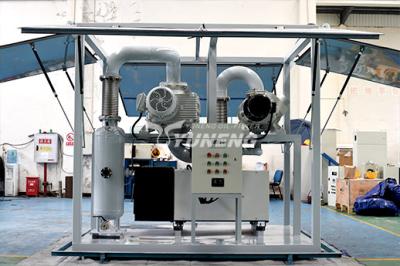Vacuum Pumps for Power Transformers: Enhancing Performance and
-
Power transformers are integral to the safe and reliable transmission of electricity. However, they are prone to failure due to factors such as aging insulation, excessive moisture, and the accumulation of gas within the oil. Fortunately, vacuum pumps are an essential tool in mitigating these risks and ensuring that transformers continue to operate effectively throughout their lifespan. In this blog, we will explore how vacuum pumps contribute to transformer performance and how their use can prevent costly failures.
The Vacuum Pump’s Role in Preventing Gas Accumulation
One of the primary causes of transformer failure is the buildup of gases in the insulating oil. These gases can form due to thermal degradation, electrical discharges, or the ingress of air and moisture. When gas accumulates, it creates bubbles that can cause arcing, overheating, or even internal breakdowns within the transformer. Vacuum pumps serve a crucial role by drawing out these gases through a vacuum degassing process. By reducing the pressure inside the transformer, the pump enables gases dissolved in the oil to escape, thereby improving the transformer’s insulating properties and preventing breakdowns.
Vacuum Pumps for Moisture Removal and Dielectric Strength
Moisture is another critical factor that impacts the performance of transformer oil. Water in the oil reduces its dielectric strength, making it more susceptible to electrical failure. Vacuum pumps remove moisture by applying a controlled vacuum to the oil, which evaporates water molecules, allowing them to be safely removed. This process prevents short circuits, enhances the oil’s insulation properties, and helps avoid catastrophic transformer failure.
Types of Vacuum Pumps for Preventive Maintenance
Several types of vacuum pumps are designed specifically for transformer maintenance. Each type is suited for different tasks, depending on the size of the transformer, the amount of oil to be purified, and the level of contaminants present.
Positive Displacement Pumps: These pumps create a constant volume flow and are useful for handling large oil volumes. They are typically employed in large transformers that require continuous degassing and moisture removal.
Liquid Ring Vacuum Pumps: Effective for moisture removal, these pumps use water to create a seal and provide more consistent performance in removing moisture from oil, making them a preferred choice in oil dehydration systems.
Piston-type Pumps: These pumps are well-suited for vacuuming smaller transformers and provide efficient gas and moisture removal under varying load conditions.
Preventing Transformer Failures with Vacuum Pumps
A transformer failure is costly not only in terms of repair but also in downtime, service interruptions, and reputational damage. Vacuum pumps help mitigate these risks by offering a proactive solution to moisture and gas buildup. Regular use of vacuum pumps for maintenance can ensure the following:
Increased Transformer Reliability: By removing gases and moisture regularly, vacuum pumps maintain the dielectric strength and efficiency of transformer oil, thereby preventing unexpected failures.
Energy Efficiency: Clean oil ensures the transformer operates at optimal efficiency, reducing energy losses and improving performance.
Lower Operating Costs: Regular maintenance with vacuum pumps reduces the likelihood of major repair expenses or the need for premature transformer replacement.
Conclusion
Vacuum pumps play a crucial role in the effective maintenance of power transformers by preventing gas and moisture buildup. Their use ensures that transformers perform optimally, are protected against electrical faults, and have a longer lifespan. By utilizing the right type of vacuum pump for oil degassing and moisture removal, transformer operators can safeguard their equipment, minimize costly repairs, and ensure the continued smooth operation of the power grid. Prioritizing vacuum pump maintenance is an investment in the long-term success and reliability of transformer systems.
